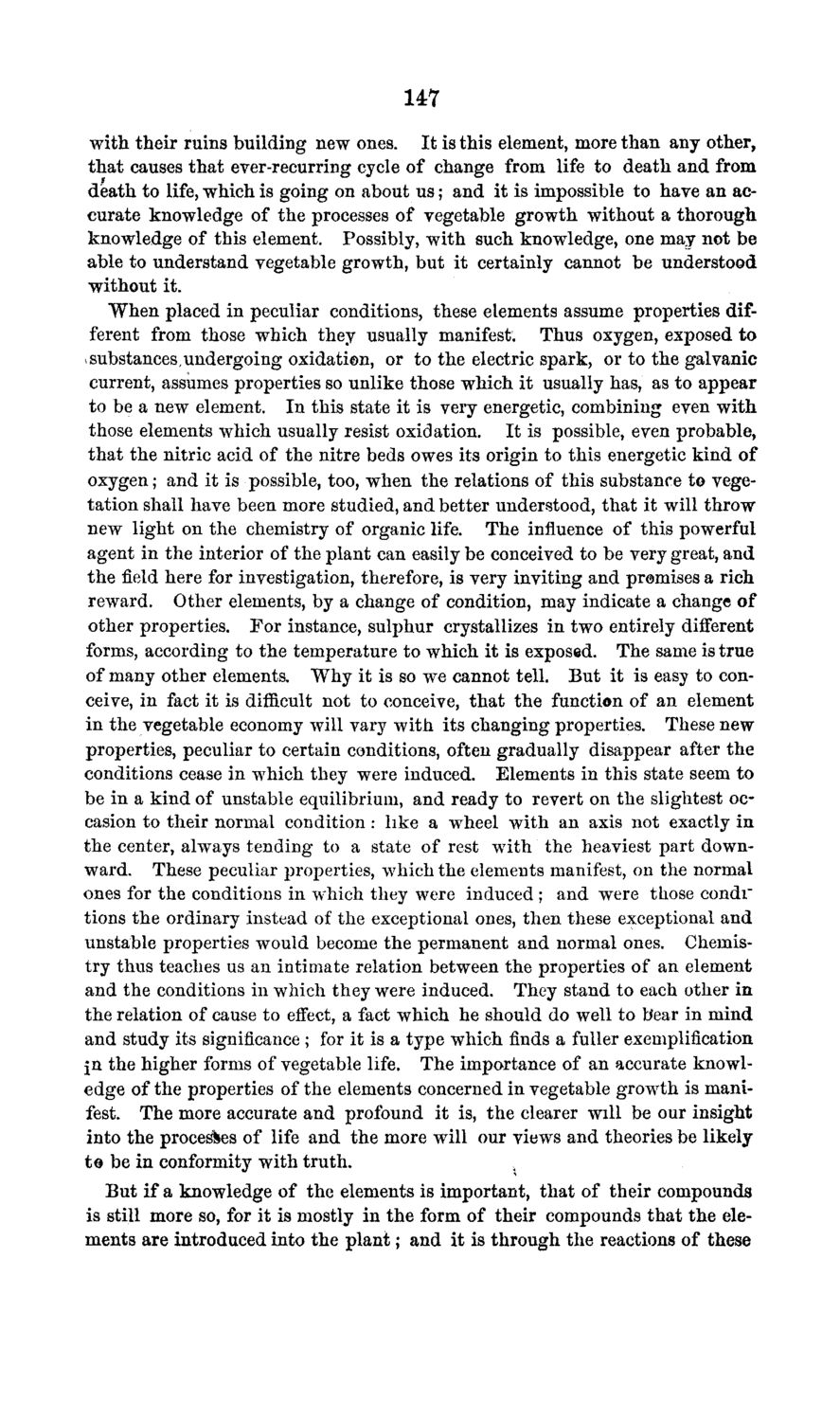| |
| |
Caption: Board of Trustees Minutes - 1869
This is a reduced-resolution page image for fast online browsing.

EXTRACTED TEXT FROM PAGE:
14:7 with their ruins building new ones. It is this element, more than any other, that causes that ever-recurring cycle of change from life to death and from death to life, which is going on about us; and it is impossible to have an accurate knowledge of the processes of vegetable growth without a thorough knowledge of this element. Possibly, with such knowledge, one may not be able to understand vegetable growth, but it certainly cannot be understood without it. When placed in peculiar conditions, these elements assume properties different from those which they usually manifest. Thus oxygen, exposed to ^ substances undergoing oxidation, or to the electric spark, or to the galvanic current, assumes properties so unlike those which it usually has, as to appear to be a new element. In this state it is very energetic, combining even with those elements which usually resist oxidation. It is possible, even probable, that the nitric acid of the nitre beds owes its origin to this energetic kind of oxygen; and it is possible, too, when the relations of this substance t© vegetation shall have been more studied, and better understood, that it will throw new light on the chemistry of organic life. The influence of this powerful agent in the interior of the plant can easily be conceived to be very great, and the field here for investigation, therefore, is very inviting and promises a rich reward. Other elements, by a change of condition, may indicate a change of other properties. For instance, sulphur crystallizes in two entirely different forms, according to the temperature to which it is exposed. The same is true of many other elements. Why it is so we cannot tell. But it is easy to conceive, in fact it is difficult not to conceive, that the function of an element in the vegetable economy will vary with its changing properties. These new properties, peculiar to certain conditions, often gradually disappear after the conditions cease in which they were induced. Elements in this state seem to be in a kind of unstable equilibrium, and ready to revert on the slightest occasion to their normal condition : like a wheel with an axis not exactly in the center, always tending to a state of rest with the heaviest part downward. These peculiar properties, which the elements manifest, on the normal ones for the conditions in which they were induced ; and were those condr tions the ordinary instead of the exceptional ones, then these exceptional and unstable properties would become the permanent and normal ones. Chemistry thus teaches us an intimate relation between the properties of an element and the conditions in which they were induced. They stand to each other in the relation of cause to effect, a fact which he should do well to bear in mind and study its significance ; for it is a type which finds a fuller exemplification jn the higher forms of vegetable life. The importance of an accurate knowledge of the properties of the elements concerned in vegetable growth is manifest. The more accurate and profound it is, the clearer will be our insight into the processes of life and the more will our views and theories be likely t® be in conformity with truth. But if a knowledge of the elements is important, that of their compounds is still more so, for it is mostly in the form of their compounds that the elements are introduced into the plant; and it is through the reactions of these
| |